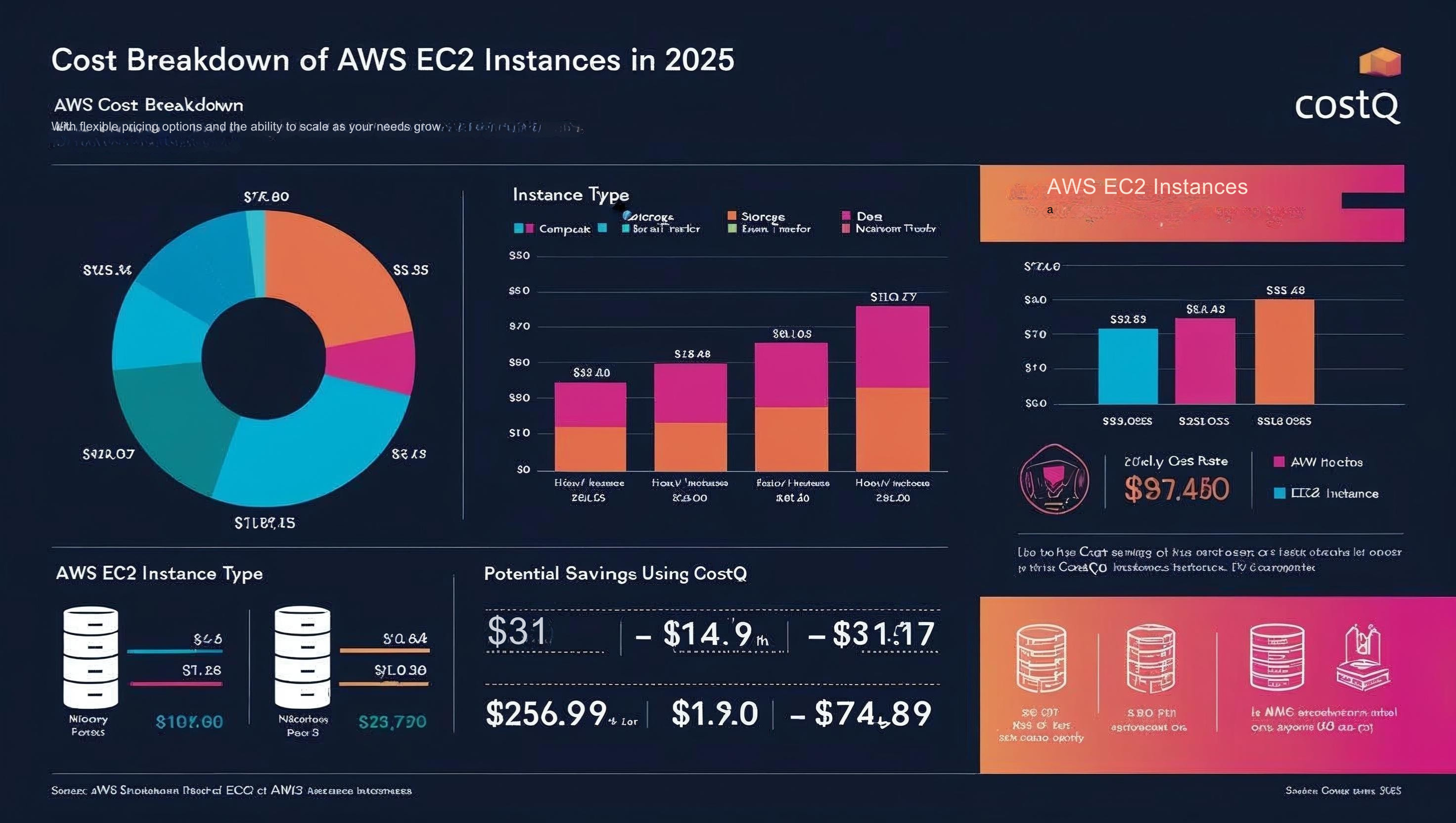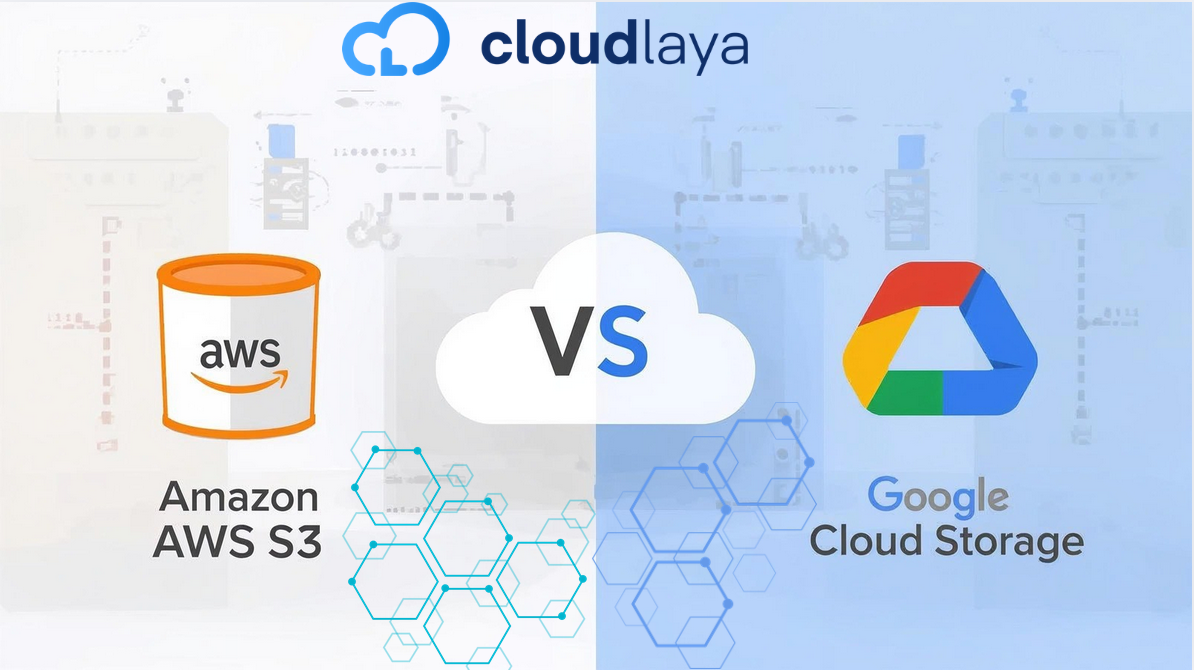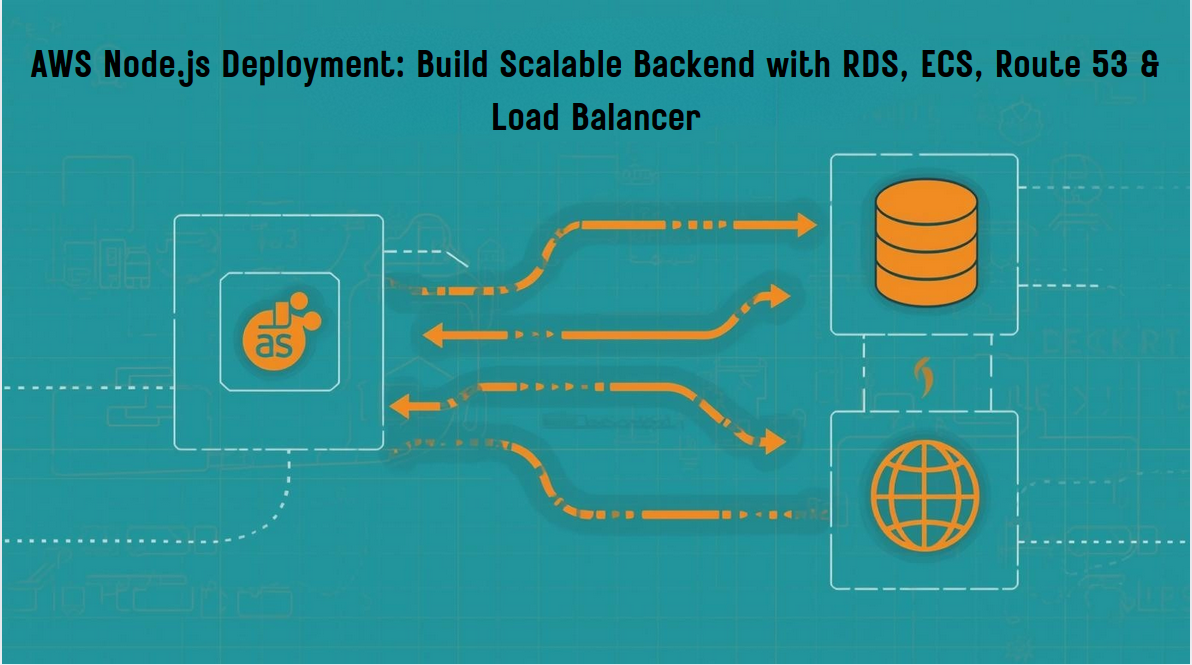
The Real Cost of EC2 Instance in AWS: 2025 Guide to Stop the Money Drain
I still remember that Monday morning in 2023. I was sipping my coffee, feeling good about the new infrastructure I’d built on AWS, when the finance email landed in my inbox: “Please explain the cost of EC2 instance.”
I literally spit out my coffee. Our cost of EC2 instance had exploded overnight.
Long story short: I had accidentally left 20 memory-optimized instances running over a three-day weekend. Each one silently racking up charges at $0.80 per hour. The cost of EC2 instances hit us hard that month.
That painful experience taught me more about EC2 pricing than any AWS documentation ever could. After spending years optimizing EC2 costs for startups and enterprises, I’ve put together this no-nonsense guide to help you avoid my expensive mistakes.
The cost of EC2 instance isn’t just about the hourly rate – it’s a complex web of pricing factors that can either drain your budget or, when managed properly, give you incredible computing power at reasonable prices.
1. What Is EC2 and Why Your Cost of EC2 Instance Matters
EC2 (Elastic Compute Cloud) is AWS’s virtual server offering. At its core, it’s pretty simple: virtual machines you can spin up or down whenever you need them.
But here’s the truth about EC2 costs that AWS’s marketing doesn’t emphasize: EC2 typically accounts for 50-70% of most companies’ AWS bills. I’ve audited over 200 AWS accounts, and the cost of EC2 instance usage is almost always the biggest line item.
Why? Because:
- It’s stupidly easy to spin up new instances
- They keep running (and charging) until explicitly stopped
- Most teams over-provision “just to be safe”
- Nobody feels personally responsible for the bill
The cost of a single EC2 instance might seem small, but when you’re running dozens or hundreds 24/7, it adds up fast. One client was spending $30K monthly just on EC2 when we started working with them. After optimization? $12K. Same performance, less than half the cost of EC2 instances.
2. Breaking Down the Real Cost of EC2 Instance
Let’s cut through the AWS pricing complexity and talk real numbers about what determines your EC2 costs:
2.1 Instance Type Impacts Cost of EC2 Instance Dramatically
The instance family and size you choose can make a 10x difference in your bill. Here’s the real cost of EC2 instance options you might be considering:
table 1
| Instance | vCPU | RAM | Monthly Cost (USD) |
|---|---|---|---|
| t3.micro | 2 | 1GB | ~$7.60 |
| t3.medium | 2 | 4GB | ~$30.40 |
| m5.large | 2 | 8GB | ~$70.08 |
| r5.2xlarge | 8 | 64GB | ~$367.92 |
I’ve seen startups running production workloads on r5.2xlarge instances when m5.large would have been fine. That’s like using a semi truck to deliver a pizza – sure, it works, but at what cost?
And listen – those monthly costs? They’re for a SINGLE instance. Multiply by your environment count (dev, staging, prod) and instance count per environment. Now you see why the cost of EC2 instance choices matters so much.
2.2 Pricing Models: How I Cut My EC2 Costs by 56%
AWS offers different ways to pay for EC2, and picking the right one can literally halve your cost of EC2 instance:
- On-Demand: Pay-as-you-go with no commitment. Highest cost of EC2 instance but maximum flexibility. You’re paying a premium for the ability to walk away anytime.
- Reserved Instances: Commit for 1-3 years. Can reduce the cost of EC2 instance by up to 75%. My personal favorite for predictable workloads.
- Spot Instances: Use spare AWS capacity at up to 90% off On-Demand prices. The champagne of EC2 on a beer budget – if you can handle interruptions.
- Savings Plans: Commit to spending a certain amount hourly for 1-3 years. More flexible than RIs but still cuts the cost of EC2 instance by 30-50%.
Real talk: I moved our database servers from On-Demand to 3-year Reserved Instances and slashed that portion of our EC2 costs by 56%. For always-on workloads, paying On-Demand is literally throwing money away.
2.3 How Region Affects Your Cost of EC2 Instance
The same exact EC2 instance costs different amounts depending on where it lives:
table 2
| Region | Monthly t3.medium Cost |
|---|---|
| US East (N. Virginia) | ~$30.40 |
| Asia Pacific (Mumbai) | ~$34.46 |
| Europe (Frankfurt) | ~$36.79 |
Pro tip I learned the expensive way: The cost of EC2 instance in US-East-1 (Virginia) is almost always the cheapest. For dev/test environments where location doesn’t matter, you can save 10-20% just by choosing the right region.
Last year, I helped move a client’s non-critical workloads from Frankfurt to Virginia, saving them about $1,800 monthly on EC2 costs alone.
2.4 Operating System: The Hidden Cost Multiplier
Your OS choice directly impacts your cost of EC2 instance:
- Linux: Baseline cost (included in prices above)
- Windows: +30-45% to your EC2 instance cost
- Red Hat: +10-20% to your EC2 instance cost
One enterprise client was running Windows Server for simple web servers that could have used Linux. Switching to Linux cut their cost of EC2 instance by almost 40% – over $5,000 monthly in savings.
2.5 Storage and Data Transfer: The Silent Cost Killers
EC2 instances need storage and networking, which add significant costs:
- EBS (gp3): ~$0.08/GB/month
- Snapshots: ~$0.05/GB/month
- Data Transfer OUT: ~$0.09/GB beyond free tier
True story: I once debugged a mysteriously high AWS bill for a client. Turned out, their cost of EC2 instance wasn’t the problem – they were paying $3,000/month in data transfer fees because their architecture was inefficiently sending data between regions. A quick redesign cut that by 80%.
3. The Real Monthly Cost of EC2 Instance: A Practical Example
Let’s look at what you’ll actually pay for a typical web server setup using a t3.medium instance running 24/7 in US East:
table 3
| Resource | Monthly Cost |
|---|---|
| EC2 Compute (730 hrs) | $30.40 |
| 50GB EBS (gp3) | $4.00 |
| 200GB Data Out | $18.00 |
| Total Cost of EC2 Instance Package | $52.40 |
That doesn’t look too scary, right? But now multiply that by 10 servers across 3 environments. Suddenly your cost of EC2 instance infrastructure is over $1,500 monthly.
And that $1,500? It’s probably about 40% higher than it needs to be. Almost every AWS account I’ve audited has been dramatically overpaying for EC2.
4. Hidden Factors Increasing Your Cost of EC2 Instance
After reviewing hundreds of AWS bills, I’ve identified these sneaky factors that secretly inflate your cost of EC2 instance:
- Idle instances: The #1 EC2 cost killer. I found a client paying $870/month for development instances that were only used 9-5 on weekdays – they were idle 70% of the time they were running up charges.
- Oversized instances: I’ve seen t3.2xlarge instances ($122/month) running workloads that barely touched 5% CPU. That’s like renting a mansion to store a shoebox.
- Orphaned volumes: After an EC2 instance is terminated, its EBS volumes often live on, silently adding to your bill. One client had over 2TB of detached volumes – $160/month for storing nothing useful.
- Multi-AZ data transfer: Even data transfer between availability zones in the same region adds to your cost of EC2 instance infrastructure. This caught me by surprise when I first started with AWS.
- Snapshots nobody remembers: Automated snapshots are wonderful until you forget about them. I once found 3 years of daily snapshots for a test database – over $900 in unnecessary storage costs.
The cost of EC2 instance infrastructure isn’t just about the hourly rate – it’s these hidden factors that often make up 30-50% of what companies pay.
5. Practical Ways to Reduce Your Cost of EC2 Instance Today
After optimizing EC2 costs for dozens of companies, here are the strategies that actually work to reduce your cost of EC2 instance:
5.1 Right-Size Instances (Cut Costs by 30-50%)
Most EC2 instances are massively oversized. Look at your CloudWatch metrics:
- Max CPU below 20%? You’re probably paying for 2-3x more compute than you need
- Max memory usage below 40%? You could likely drop to a smaller instance size
I reduced a client’s cost of EC2 instance fleet by 43% just by right-sizing based on actual utilization data. That’s over $4,700 monthly savings without changing their application at all.
5.2 Implement Auto Scaling (Save 30-65% on Non-Production)
Why pay for peak capacity 24/7? Set up Auto Scaling to match your actual needs:
- Scale up during business hours, down overnight
- Scale based on actual load metrics, not worst-case scenarios
- Zero instances during totally inactive periods
One e-commerce client cut their cost of EC2 instance infrastructure by 65% by scaling their dev/test environments down to zero outside of business hours. That’s $3,200 monthly they were wasting before.
5.3 Schedule Instance Stop/Start (The Easiest 50-70% Savings)
For non-production workloads, this is the fastest win:
- Create a simple Lambda function to stop instances at 7 PM and start them at 7 AM weekdays
- Tag instances with “AutoShutdown=true”
- Watch your cost of EC2 instance plummet
The math is simple: If instances run 12 hours instead of 24, you cut your EC2 costs in half. If you eliminate weekends too, you’re looking at a 65-70% reduction in cost of EC2 instance for dev environments.
I implemented this for a SaaS startup and saved them $2,700 in the first month. Total implementation time? About 45 minutes.
5.4 Switch to Spot Instances for Suitable Workloads
Spot Instances can cut your cost of EC2 instance by up to 90%. They work great for:
- Batch processing jobs
- Stateless application tiers
- Test environments
- CI/CD pipelines
We moved our entire CI/CD infrastructure to Spot Instances and reduced that cost of EC2 instance component by 87%. Over a year, that’s $23,000 saved – enough to hire another part-time developer.
5.5 Purchase Reserved Instances or Savings Plans
For instances that run 24/7, Reserved Instances are almost always worth it:
- 1-year standard RI: ~40% off On-Demand cost of EC2 instance
- 3-year standard RI: ~60% off On-Demand
- 3-year convertible RI: ~54% off but with flexibility to change instance types
After analyzing our production usage patterns, I purchased Reserved Instances for our baseline capacity and used On-Demand for peaks. This hybrid approach cut our cost of EC2 instance by 38% with minimal commitment risk.
6. How CostQ Helps Reduce Your Cost of EC2 Instance
After years of manually hunting down EC2 waste, I got tired of the tedious process. That’s why at Cloudlaya, we built CostQ – the tool specifically designed to optimize the cost of EC2 instance and other AWS resources.
6.1 Real-Time EC2 Cost Monitoring
CostQ shows your EC2 costs as they happen – not after the bill arrives:
- Daily cost of EC2 instance trends
- Instance-level cost breakdowns
- Projections before you hit budget limits
One client discovered they were on track to exceed their monthly cost of EC2 instance budget by $7,000 – on day 10 of the month. They identified and fixed a runaway Auto Scaling issue before it became a financial disaster.
6.2 Automatic EC2 Cost-Saving Opportunities
CostQ automatically identifies:
- Idle EC2 instances costing you money
- Instances that can be downsized based on real usage
- EC2 pricing model optimization opportunities
During one implementation, CostQ found 28 idle instances across a client’s AWS organization – representing $3,420 monthly in wasted cost of EC2 instance resources. They terminated 22 immediately.
6.3 EC2 Cost Reduction Recommendations with ROI
CostQ doesn’t just find problems – it recommends specific solutions with projected savings:
- “Switch these 12 On-Demand instances to Reserved Instances to save $2,340/month on EC2 costs”
- “Right-size these 8 memory-optimized instances to save $1,872/month”
- “Schedule shutdown for these dev instances to save $945/month”
Each recommendation includes implementation instructions and exact cost of EC2 instance savings.
6.4 EC2 Budget Alerts That Actually Work
Set alerts for EC2 spending:
- By environment (dev/staging/prod)
- By team or cost center
- By instance type or use case
A client’s data science team received an alert when their cost of EC2 instance for GPU instances exceeded $500/day – they had accidentally left high-cost ml.24xlarge instances running after experiments. This alert alone saved them over $5,000 in one incident.
6.5 Team-Specific EC2 Cost Visibility
Give each team visibility into their own EC2 costs:
- Engineering sees their dev environment costs
- Data team sees their analytics instance costs
- Finance sees the complete picture
This accountability dramatically changes behavior – when teams see the actual cost of EC2 instance resources they’re using, they naturally become more cost-conscious.
“CostQ helped us identify and eliminate $14,700 monthly in unnecessary EC2 costs within the first week. The cost of EC2 instance is now completely transparent to every team, and our CloudOps team can focus on building instead of cost-hunting.” — CTO at a Series B SaaS company
7. AWS Cost Explorer vs. CostQ for Managing EC2 Costs
AWS does offer some tools for cost management. Here’s how they compare when it comes to optimizing the cost of EC2 instance:
AWS Cost Explorer
Good for:
- Basic historical EC2 cost views
- Simple filtering by instance type
- Understanding broad cost trends
Limitations for managing cost of EC2 instance:
- 24-hour delay in data
- No instance-level recommendations
- No automated detection of waste
- Manual analysis required
It’s like a basic calculator when what you need is a financial advisor.
CostQ
Specifically designed to optimize cost of EC2 instance:
- Real-time EC2 cost data
- Automatic detection of idle and oversized instances
- EC2-specific recommendations with implementation steps
- Historical usage patterns that reveal optimization opportunities
- Team-specific dashboards for accountability
CostQ pays for itself in the first month through EC2 cost savings for most companies with 50+ instances.
8. Future Trends Affecting Cost of EC2 Instance (2025-2027)
After working with AWS pricing for years, here’s what I see coming for EC2 costs:
- ARM dominance: Graviton instances will offer 25-40% lower cost of EC2 instance compared to x86. Companies not refactoring for ARM will be at a financial disadvantage.
- Spot Instance management tools: As more workloads become interrupt-tolerant, advanced tools will help maximize Spot usage, potentially cutting the average cost of EC2 instance by 60-70%.
- Resource-based pricing shifts: AWS will likely adjust the CPU:memory:network ratios in pricing, possibly making network-heavy instances relatively more expensive.
- AI-driven predictive scaling: Tools will predict workload needs days in advance, automatically selecting the optimal cost of EC2 instance types and purchasing short-term Reserved Instances for maximum savings.
- Carbon-aware instance scheduling: As sustainability becomes financially important, the cost of EC2 instance will include carbon footprint considerations, with incentives for running during renewable energy peaks.
Companies that adapt to these trends will see their cost of EC2 instance drop by 15-20% annually, while those stuck in traditional patterns will face rising relative cost
Conclusion: Take Control of Your EC2 Costs Today
The cost of EC2 instance isn’t something you should just accept as a necessary evil. With the right approach, tools, and mindset, you can:
- Cut your EC2 costs by 30-60% within 30 days
- Maintain or improve performance and reliability
- Free up budget for innovation rather than infrastructure
I’ve seen this transformation repeatedly – companies going from “AWS bill shock” to complete confidence in their cloud spending. The difference isn’t resources or team size; it’s having the right tools and prioritizing cost as a metric that matters.
By combining AWS best practices with Cloudlaya’s expertise and CostQ’s purpose-built tools for reducing the cost of EC2 instance, you can transform your AWS bill from a source of stress to a competitive advantage.
Ready to Slash Your Cost of EC2 Instance?
👉 Try CostQ free for 14 days and see how much you could save.
👉 Or schedule a free EC2 cost audit with our team at Cloudlaya.
P.S. The average company we work with reduces their cost of EC2 instance by 41% in the first 60 days. What would you do with that money if it wasn’t going to AWS.
You might find these blogs helpful.
7 Powerful AWS NOVA Gen AI Tools That Make AI Work For You (No Coding Required!)
Deploy frontend app using Kubernetes In 2025 – Step By Step Guide.
Exploring the Power of AWS Cloud In 21st Century: A Comprehensive Overview
AWS PartyRock: Showcasing the Creativity of Artificial Intelligence
CI/CD Pipeline Configuration: Build, Deploy to EC2, and Push Docker Image to Amazon ECR


